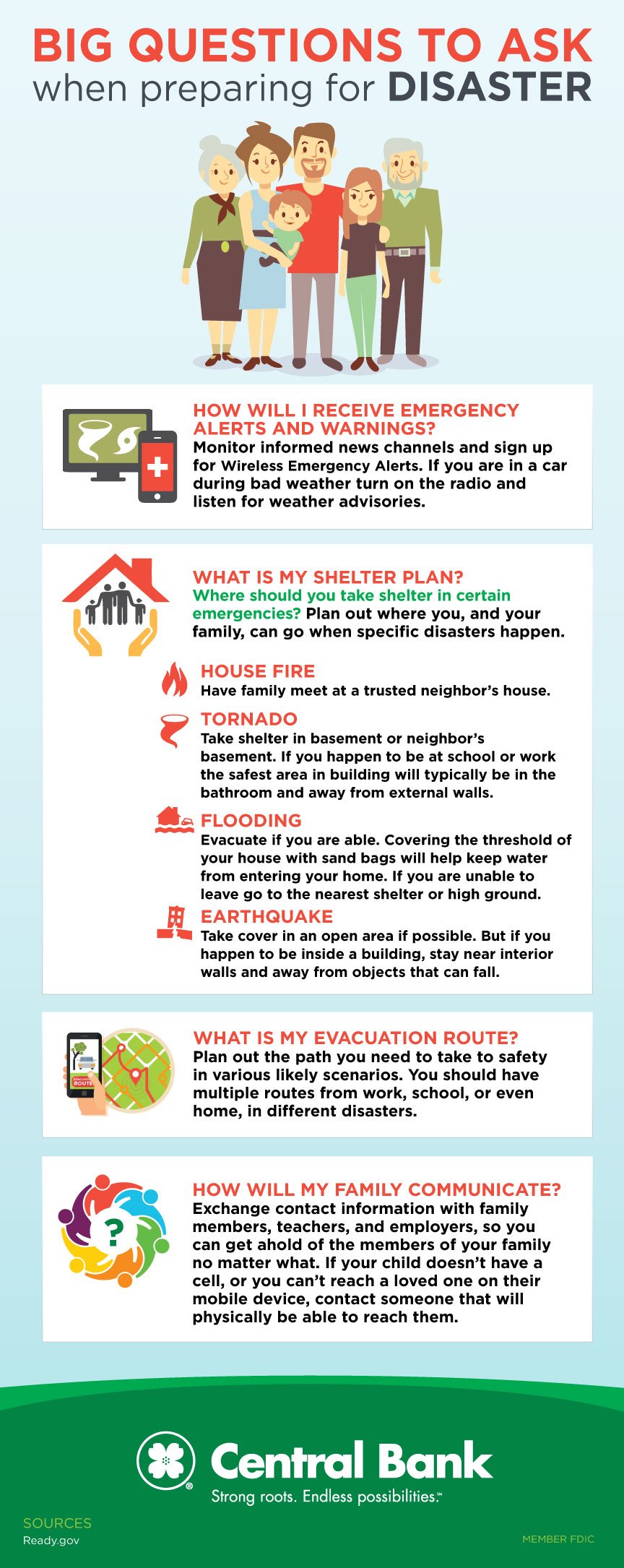Below are four steps that you can follow to build an apt emergency plan.
Step 1: The questions that need to be asked
These are questions you should discuss with your loved ones in order to create a plan of action that everyone can follow:
- How will I receive emergency alerts and warnings?
- Monitor informed news channels and sign up for Wireless Emergency Alerts. If you are in a car during bad weather, turn on the radio and listen for weather advisories.
- What is my shelter plan?
- Where should you take shelter in certain emergencies? Plan out where you, and your family, can go when specific disasters happen.
- House Fire
- Have your family meet at a trusted neighbor’s house.
- Tornado
- Take shelter in your basement or neighbor’s basement. If you happen to be at school or work, the safest area in a building will typically be in the bathroom and away from external walls.
- Flooding
- Evacuate if you are able. Covering the threshold of your house with sandbags will help keep water from entering your home. If you are unable to leave, go to the nearest shelter or high ground.
- Earthquake
- Take cover in an open area if possible. But if you happen to be inside a building, stay near interior walls and away from objects that can fall.
- House Fire
- Where should you take shelter in certain emergencies? Plan out where you, and your family, can go when specific disasters happen.
- What is my evacuation route?
- Plan out the path you need to take to safety in various likely scenarios. You should have multiple routes from work, school, or even home in different disasters.
- What is my family/household communication plan?
- Exchange contact information with family members, teachers, and employers, so you can get a hold of the members of your family no matter what. If your child doesn’t have a cell, or you can’t reach a loved one on their mobile device, contact someone that will physically be able to reach them.
Step 2: Know the needs of your household.
In the wake of an emergency, you may be in a panic too. It is important to come up with a list of things that the members of your family need in relation to assistance and survival. So, when the time comes, you are not reeling to figure out what you need to grab.
Things to consider:
- Dietary needs
- Disabilities
- Medical needs (medication and equipment)
- Pets and/or service animals
- Cultural or religious considerations

Step 3: Fill out a family emergency plan.
Download and fill out the family emergency plan below or use it as a guide to make your own custom emergency plan. Once you have one made for your family, be sure that everyone will have a copy on hand. Some of it will include important contact information, the number for different hospitals, and meeting points for different disaster scenarios. Another important step to your emergency plan is preparing your emergency fund.
Emergency Plan
Step 4: Practice makes perfect.
Be sure to review and rehearse the emergency plan with your family to ensure that come the time, and the place, they will be ready to act.
Make a Plan, Ready.gov